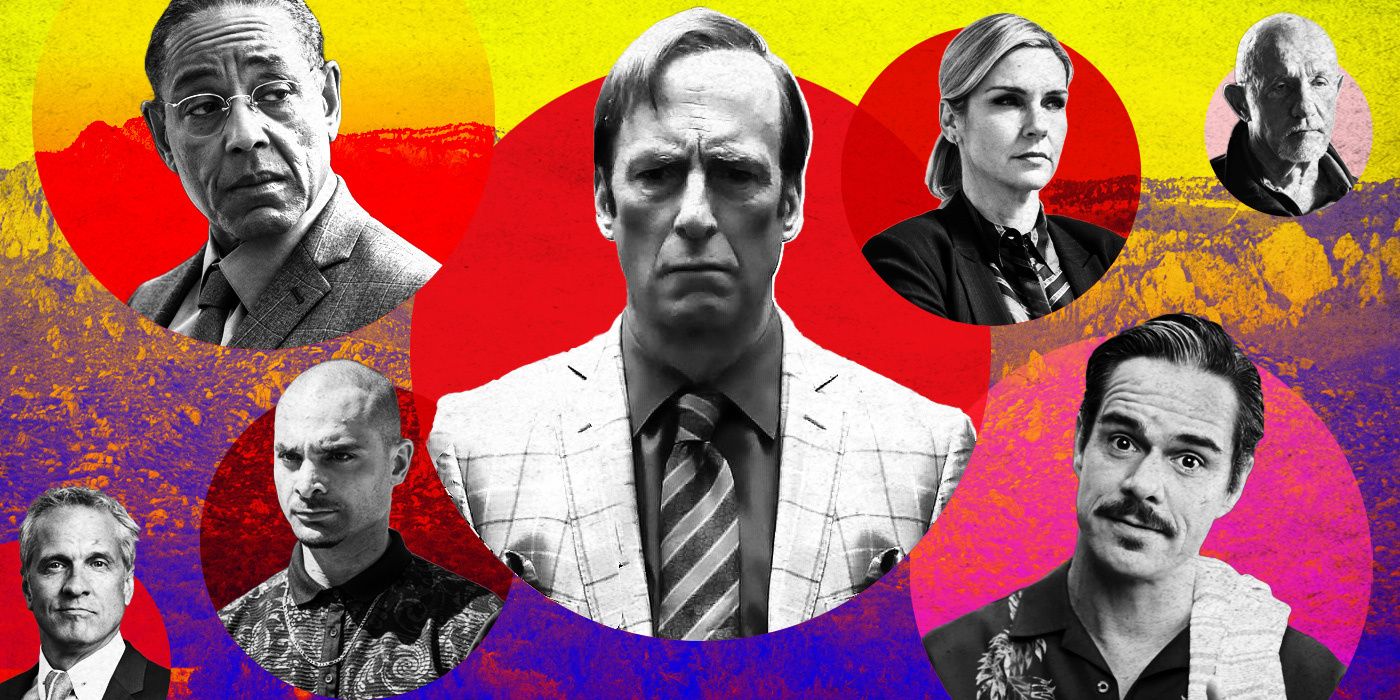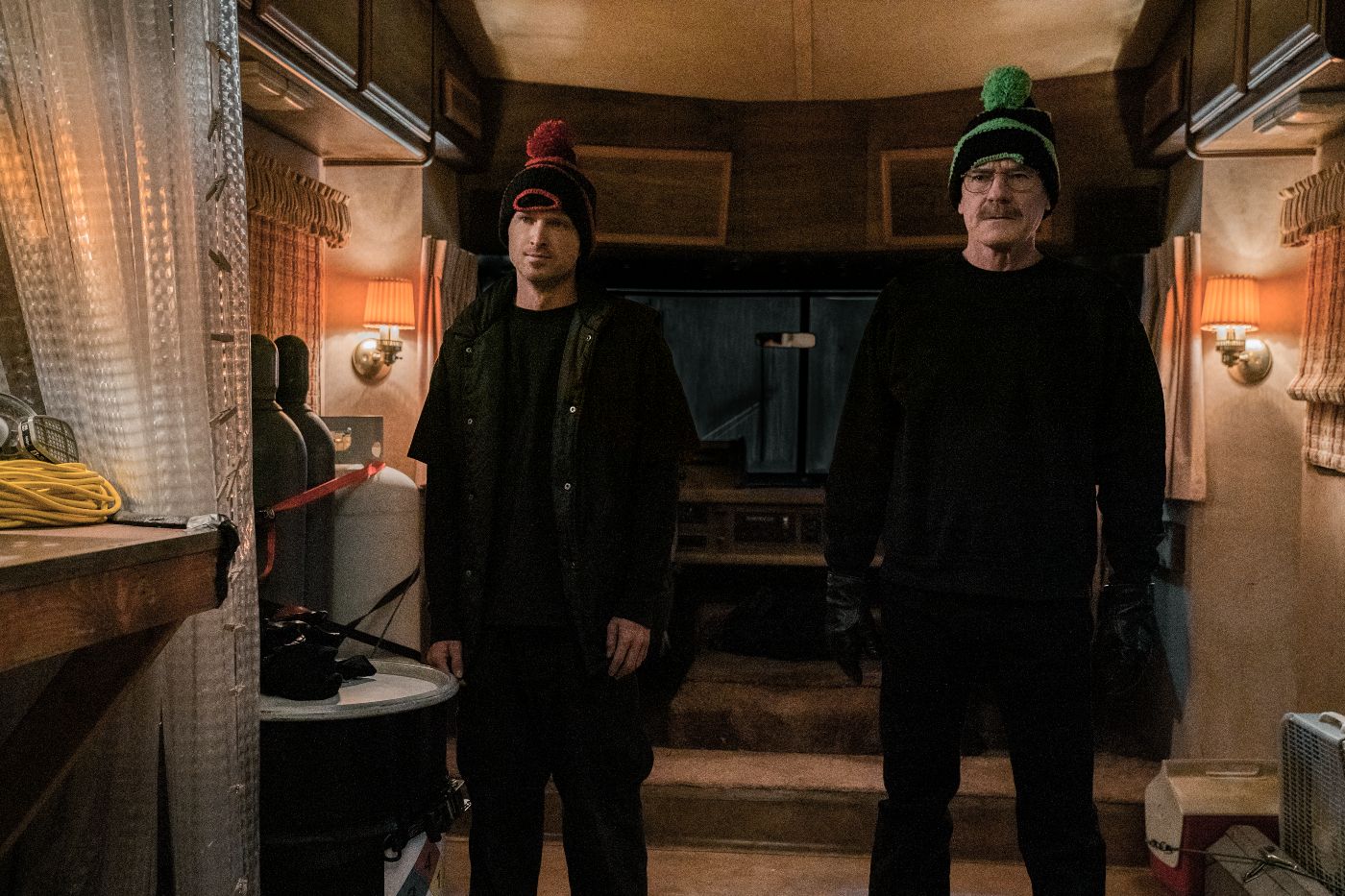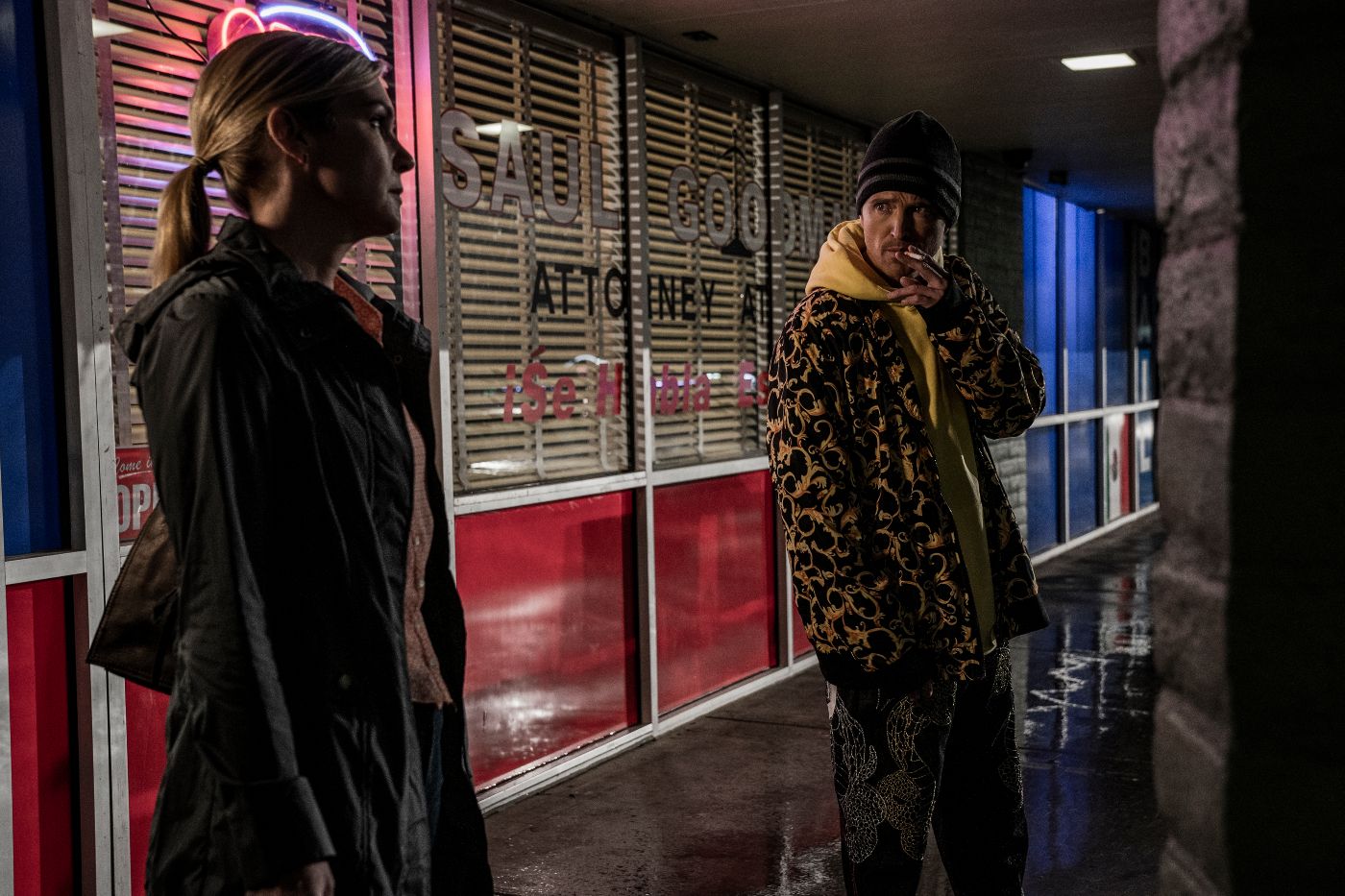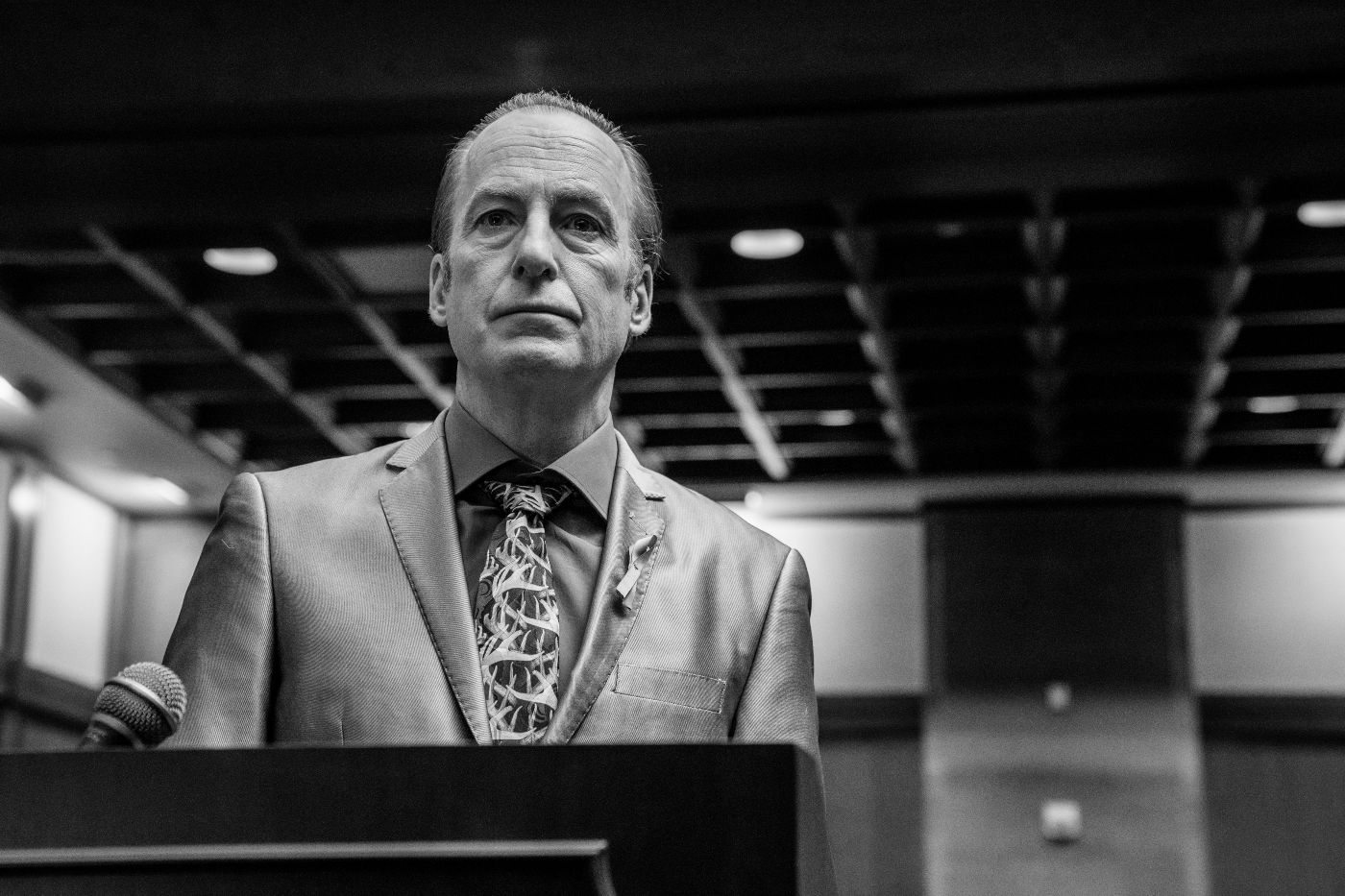Editor's note: The below article contains spoilers for Better Call Saul Season 6.The eleventh episode of Better Call Saul’s final season saw the long-awaited return of Walter White and Jesse Pinkman, with Bryan Cranston and Aaron Paul reprising their Emmy award-winning roles from Breaking Bad. Appropriately enough the episode was titled "Breaking Bad," a nod to its predecessor's second season episode "Better Call Saul," which introduced the world to Bob Odenkirk’s con-artist turned criminal lawyer Saul Goodman. It was a delight to see these characters again after such a long absence from our screens, and revisiting Saul’s first interaction with them with the knowledge of everything he has gone through casts a new light on his partnership with Walter and their subsequent rise through the criminal underworld.
There was, however, one complaint that reared its head in the aftermath of the episode: Their appearance. The original “Better Call Saul” episode aired 13 years ago, and as much as we’d all like Cranston and Paul to discover the secret to eternal youth, it’s not surprising they’ve both added a few wrinkles to their faces in the ensuing time. The show does attempt to disguise this, but nothing will hide the fact that Jesse (a character who is 24 throughout much of Breaking Bad) now looks like he’s on the cusp of middle age. It’s an issue Better Call Saul has had to contend with since its inception, with three of its main cast members being reprisals from Breaking Bad alongside countless others in guest or supporting roles. In these instances the problem is only exacerbated, with the younger versions of these characters looking older than the future versions that Walter and Jesse will later meet. For a show that’s selling itself as a prequel, it’s a problem that could potentially undermine its whole premise right out of the gate.
One of the proposed solutions is digital de-aging, a technique that is steadily gaining popularity as a means of keeping our favorite actors in their prime forever. In theory, it’s not a bad idea, and avoids having to resort to using unconvincing make-up or even attempting the unenviable task of recasting such iconic roles. Unfortunately, while the technology has progressed tremendously since its more infamous cases during its early years (*cough* X-Men: The Last Stand *cough*), it still hasn’t found a way to escape from the uncanny valley. Even in films where it is mostly seamless like The Irishman or Spider-Man: No Way Home, there still exists a thin layer of artifice that serves as a constant reminder that what you’re watching is nothing more than a work of fiction. And that’s not even mentioning the disconnect between the de-aged face and the au naturale body, creating situations where different parts of the anatomy appear to be operating in different decades. In the aftermath of the “Breaking Bad” episode, many fan edits began to crop up in an attempt to ‘fix’ this issue, using programs like FaceApp and EbSynth to de-age Paul’s face. It was an honorable effort, but served only to highlight just how distracting the technique always is. Sure, the actors may resemble their character’s age more accurately, but they also look like rejects from a late 90s sci-fi film.
Thankfully, showrunners Peter Gould and Vince Gilligan opted not to follow the same path, accepting the fact that people age and hoping the audience does too (while also avoiding becoming the bane of every VFX artist working for AMC). It’s a bold decision, and one that has not escaped a certain amount of backlash, but ultimately it was for the best. Putting aside the budgetary requirements needed to de-age such a large percentage of its cast, it would have also sacrificed one of the most essential parts of Better Call Saul’s success: Its authenticity. This is a show that lives and breathes in the real world, avoiding a sensationalized version of criminality that has been done to death in countless shows. Better Call Saul might not have the fast-paced excitement of its predecessor, but never has the criminal life felt as believable as this. When Saul and Mike (Jonathan Banks) have to drag $7 million of cartel money across the smoldering New Mexico desert, you feel every inch of their dehydrated and sunburnt bodies. Now imagine that episode again but with a thick coating of digital makeup across their faces. The awkward mix between reality and artifice would have robbed the episode of its sincerity, undermining anything the writers had been hoping to achieve.
When it all comes down to it, de-aging isn’t even needed. The actors may not always look the age that they should, but thanks to how effortlessly they are able to play these characters (along with some clever framing and lighting), what could have been a calamitous issue is ultimately never felt. Take Jesse’s scene from the season’s twelfth episode, “Waterworks,” that sees him briefly cross paths with Kim (Rhea Seehorn), one of Better Call Saul’s greatest characters. It’s a moment that doesn’t add much to the overarching narrative, but the joy of seeing these two characters share a scene with the knowledge of how much both of their lives were or will be changed by Saul (Kim having just ended her relationship with him and Jesse at the very start of his) makes it a thoroughly compelling scene regardless.
What about the fact that Jesse is being played by an actor old enough to be his father? Quite simply, it doesn’t matter. It appears that no matter how much time elapses between Breaking Bad and the present day, Paul will always be able to slip back into the role of Albuquerque’s favorite meth dealer like the show never stopped airing. His mannerisms, complete with extravagant hand gestures that ensures he never stays still, expels the demeanor of someone half his age. The energy with which he delivers his lines is astonishing, and watching him ramble on about the time his friend ended up in court after stealing a fake baby Jesus from a church nativity play, oblivious to the fact that Kim isn’t paying a lick of attention to him, conjures images of his egotistical younger self before his partnership with Walter White left him wise beyond his years. Any concerns about Paul’s appearance become irrelevant the second we hear the first "yo," immediately taking us back to the immature and inexperienced Jesse Pinkman before he became embroiled in the largest drug empire in New Mexico’s history. The decision to place the scene at night proves beneficial, with Gilligan shrouding much of Jesse in shadows while also keeping close-ups to a minimum, but it wasn’t really needed. Paul’s performance is more than enough, capturing the essence of Breaking Bad-era Jesse which is all that is required, allowing viewers to focus on the content of the scene rather than being distracted by digital trickery.
This mindset proves beneficial all the way through to the show’s finale "Saul Gone." The reappearance of Cranston for another flashback, alongside Michael McKean in a brief but welcome cameo as Chuck McGill, share much of the same qualities as Paul’s appearances – both manage to showcase their respective characters in a particularly crucial moment in their history by replicating their voices and body language to a fault, in turn becoming excellent examples of their acting talents that will have no one concentrating on the additional wrinkles that appear to have grown overnight.
The advantages of not de-aging also extend to a large number of scenes in the post-Breaking Bad timeline (the bulk of the final four episodes), aiding the show in a way that Gould and Gilligan may not have intended. Despite picking up just a few months after we last saw him in Breaking Bad’s penultimate episode, "Granite State," Saul looks noticeably older during these segments. When he confesses to his crimes to "Saul Gone," donning a flamboyant suit reminiscent of those he’d previously made so iconic, he appears like a withered old husk of his former self, a statement that hits brutally close to the truth. The magnitude of his crimes has finally caught up with him, enacting their toil on him both physically and mentally. The quirky comic relief side character we all used to love is gone, replaced by a tragic and heartbroken man so deeply entrenched in a prison of his own creation not even his devilish chicanery of the judicial system will save him this time. His aged appearance extenuates this point perfectly, hammering home the tragedy of his character that makes his comparative youthfulness in Breaking Bad even more painful in retrospect.
Even when considering all of this, the absence of de-aging is only felt when comparing Better Call Saul to its predecessor anyway. When judging it as a standalone show (something it is more than capable of doing), this issue is rendered entirely null and void. There is nothing to suggest that anyone’s appearance should ever be an issue, a notion helped by the writers rarely making specific mention of how old any of their characters are. Obviously if you splice Walter and Jesse’s scenes from “Better Call Saul” and “Breaking Bad” together (as multiple fan edits have done) the difference is immediately apparent, but that’s not how these scenes are intended to be viewed. They’re two different scenes in two different shows, each intended to be glimpsed with a different perspective that furthers the development of their lead character(s) in their own specific way, and to spend millions of dollars fixing a problem that many people won’t even realize exists would not only have been a colossal waste of resources, but would only have served to undermine the franchise’s return to one of its most iconic moments.
When asked about the lack of de-aging in the show, Thomas Schnauz (one of Better Call Saul’s most prominent writer-directors) responded rather bluntly with "it is what it is." He went on to elaborate by saying that "we’re telling a story and you can roll with it or you start picking at [it]," a mindset that cuts to the heart of the issue. As long as the story is engaging, and the performances are believable, audiences are willing to overlook niggles that would otherwise prove troublesome. In fact, the story may prove so engrossing that they only notice said issues in hindsight, which is a sure sign that the show is in good hands.
Better Call Saul excels at this. It’s a contender for the best prequel ever made, with its most recent seasons making the case that it has even surpassed its predecessor as the most nuanced character study in modern television. When you’re watching some of the most brilliant writing ever to grace a script across 63 phenomenal episodes, what does it matter if someone has one or two extra gray hairs than they should? The proposal to de-age its cast so it can sell itself as a Breaking Bad prequel sounds fine on paper, but in execution it would almost certainly have worked against the final product. Fortunately the writers were smart enough to realize this, and by trusting their audience to not let such a quibble ruin their enjoyment, Better Call Saul has cemented itself as one of the greatest shows of its time.




